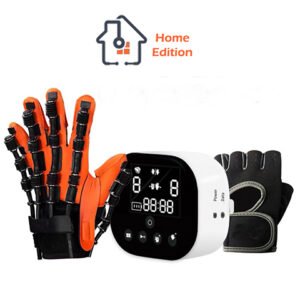Somatoparaphrenia and Hand Rehabilitation
Somatoparaphrenia is a monothematic delusion in which a person denies ownership of a limb or a whole side of their body.
Even when given irrefutable confirmation that the limb belongs to and is attached to their own body, the patient fabricates intricate stories about whose limb it is and how it came to be on their body.
Delusions can get so elaborate in some situations that a limb is treated and cared for as if it were a different individual.
Damage to the posterior cerebral regions (temporoparietal junction) of the cortex, it has been suggested, may have a key role in the development of somatoparaphrenia.
Somatoparaphrenia has been reported to manifest itself primarily in one’s left arm, and it is frequently accompanied by left-sided paralysis and anosognosia (denial or lack of awareness) of the paralysis.
Somatoparaphrenia patients undergo a series of surgical procedures. They are frequently urged to participate in a revolutionary multimodal treatment program that includes motor rehabilitation training, traditional physiotherapy, and robotic rehabilitation using specialist Rehabilitation Robot Gloves.
Patients are expected to improve in global cognitive functioning, mood, motor abilities, and perception of themselves and their body at the end of the program, lessening feelings of estrangement and aversion toward their limb.
In such difficult somatoparaphrenia cases, where patients are almost unaware and thus unresponsive to physical activities, a highly professional and effective device should be used to ensure rapid improvement so that patients reprocess their body’s overall status and regain awareness and sensation with their limbs.
In this context, the SIFREHAB-1.1 and SIFREHAB-1.0 hand rehabilitation devices are indicated as the best model options capable of achieving significant improvement in somatoparaphrenia patients in a short period of time.
The home rehabilitation equipment listed below can also provide resistance in the opposite direction, which can help with movement stabilization and hand muscle toning activities.
The design could be used for a range of demands and users, including somatoparaphrenia sufferers, in simpler words.
In short, SIFREHAB-1.0 and SIFREHAB-1.1 provide low-cost, safe, intensive, and task-oriented rehabilitation through home therapy, which can improve treatment efficacy by including the recovery of daily-living-activity functions as well as a change in the home environment. Both benefits would be extremely valuable to somatoparaphrenia sufferers, who take much too long to realize that the damaged limb is theirs.
To summarize, somatoparaphrenia is a body perception condition that, if left untreated, can lead to serious consequences that harm the remainder of the sane body parts.
Another concern is that individuals with this disease may take a long time to digest their health, necessitating a long-term, intensive treatment that should ideally take place at home.
If these patients are still unsure about the best treatment approach for them, they should consider the SIFREHAB-1.0 and SIFREHAB-1.1 Rehabilitation Robot Gloves, which will help them improve their symptoms over time by allowing them to complete hand therapy exercises autonomously at home.
Reference: Somatoparaphrenia


